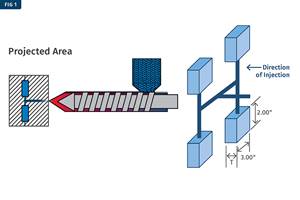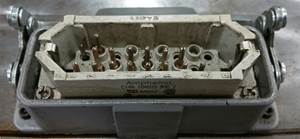CNC Routing Raises Productivity For PVC Door Maker
By using a CNC router, drilling holes in PVC became faster and achieved a much higher level of consistency.
The accuracy, reliability, and affordability of computer numerical control (CNC) routers have helped a manufacturer of PVC loading-dock doors significantly boost its quality and productivity. D.L. Manufacturing in North Syracuse, N.Y., a maker of segmented raising/lowering doors for warehouses and loading docks, was dissatisfied with its previous manual drilling operations because of the slow speed and the uneven feed rates that caused variable hole sizes and locations. The company had even considered large CNC machining centers but found they were expensive and much heavier than needed to cut PVC.
Faster and less costly
D.L. Manufacturing opted for the LC Series CNC router from Techno-Isel, New Hyde Park, N.Y., which cost only a fraction of the price of an automated machining center. CNC routing also took only 20% as long as manual drilling and improved quality because feed rate and position were consistent for every part. “The CNC router substantially improved our manufacturing operations by drilling holes in PVC faster and with a much higher level of consistency,” says engineering manager Wendell Moulton.
D.L. Manufacturing’s MxV knockout dock door features durable polymer top and bottom panel brush seals that make the entire perimeter of the door weather-tight yet allow the door to be knocked out without damage if, for example, it was struck by a forklift. Slots in the door’s track allow the doors to be reset into position simply by opening and closing them. The hinge is designed into the extruded door panel. This permits easy panel placement, and the interlocking panels snap together for smooth operation without added hinges or hardware.
The door’s PVC panels—purchased from a custom processor—are profile extrusions that are foam-filled and cut to length. The panels require holes to mount the end cap and a slotted hole for the hinge pin that holds the panels together. Eight to 10 panels are used in each door and each panel has eight drilled holes. Some doors are ordered with an optional porthole that also must be cut out.
A lock-set option was not offered originally because the manual machining operation was too difficult to perform by hand. The lock required a cavity to be made and holes to be drilled with precise locations.
Moulton says CNC routing machinery has met these manufacturing demands by ensuring consistent accuracy for hole positions. He investigated CNC machining centers of a size that could handle the largest panels, which range up to 10 ft long, and discovered that the least expensive machine in this class was $100,000. These were heavy machines with a cast-iron base that were designed primarily for cutting metals. Moulton said the Techno LC router was a better fit because of its cost, accuracy, speed, and ease of programming. It was designed specifically for PVC and other plastics, as well as wood and non-ferrous metals. D.L. paid $30,000 for the machine, fully equipped with software, automatic tool changer, and a special extension on the table to support extra-long parts.
Accurate and reliable
The LC Series router has several features that deliver accuracy and long-term reliability on a level of more expensive machines. It has ballscrews on all three axes and a closed-loop servo drive that provides smooth, play-free motion with no adjustments and minimal maintenance. For setup, D.L. used BobCAD software to define the geometry of the panels and machine a series of four panels with each setup. The machine drills four holes in one side of all four panels and then the operator rotates the panels so holes can be cut on the other side. The machine also routs out the irregular cavity for the lock, drills the mounting holes, and cuts out the optional porthole when needed. The program includes instructions to change tools automatically when required to perform these operations.
The CNC router provides substantial improvements over manual machining. Drilling time was reduced from 10 min to 2 min and the time to machine the porthole was reduced by a similar proportion. The lock cavity, which was too difficult to machine manually, was accurately produced with the CNC router.
D.L. had its software programs completed and the machine in production in less than three weeks from delivery. Moulton says the router is easy to use and maintenance-free. The company recently received its second machine to process door tracks.
The router comes fully assembled and includes Techno’s Windows-based CNC G-Code interface with free lifetime software upgrades. Three sizes are available: 30 x 24 in, 48 x 48 in, and 48 x 96 in. Each model has repeatability of 0.001 in., resolution of 0.0002 in., and maximum speed of 250 in./min. Optional equipment includes a laser-scanning module, CNC lathe attachment, vacuum blower, and a fourth-axis rotary table. The 4 x 8 ft model starts at $16,995.
Related Content
A Systematic Approach to Process Development
The path to a no-baby-sitting injection molding process is paved with data and can be found by following certain steps.
Read MoreUsing Data to Pinpoint Cosmetic Defect Causes in Injection Molded Parts
Taking a step back and identifying the root cause of a cosmetic flaw can help molders focus on what corrective actions need to be taken.
Read MoreIs There a More Accurate Means to Calculate Tonnage?
Molders have long used the projected area of the parts and runner to guesstimate how much tonnage is required to mold a part without flash, but there’s a more precise methodology.
Read MoreHot Runners: How to Maintain Heaters, Thermocouples, and Controls
I conclude this three-part examination of real-world problems and solutions involving hot runners by focusing on heaters, thermocouples, and controls. Part 3 of 3.
Read MoreRead Next
See Recyclers Close the Loop on Trade Show Production Scrap at NPE2024
A collaboration between show organizer PLASTICS, recycler CPR and size reduction experts WEIMA and Conair recovered and recycled all production scrap at NPE2024.
Read MoreFor PLASTICS' CEO Seaholm, NPE to Shine Light on Sustainability Successes
With advocacy, communication and sustainability as three main pillars, Seaholm leads a trade association to NPE that ‘is more active today than we have ever been.’
Read More









